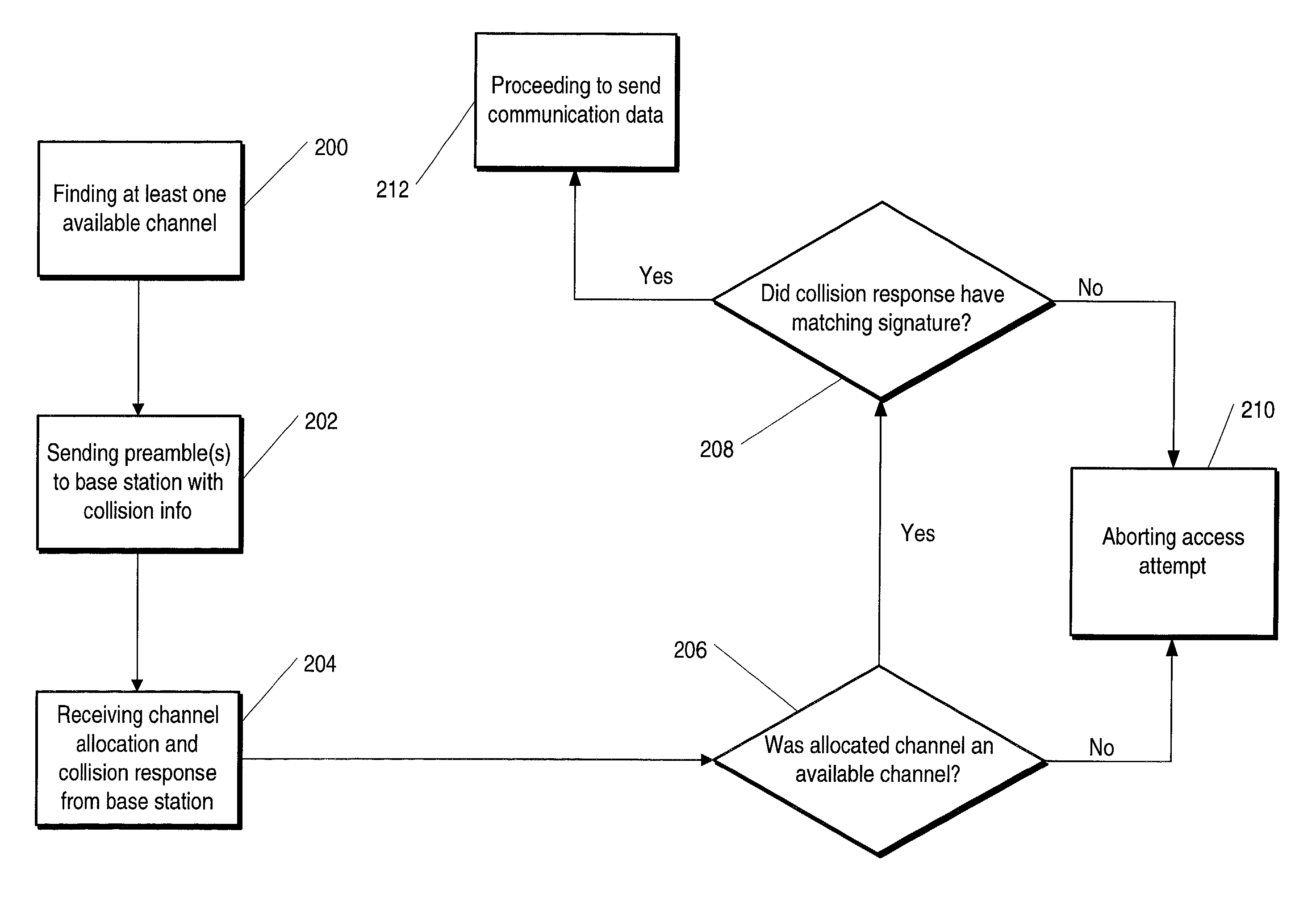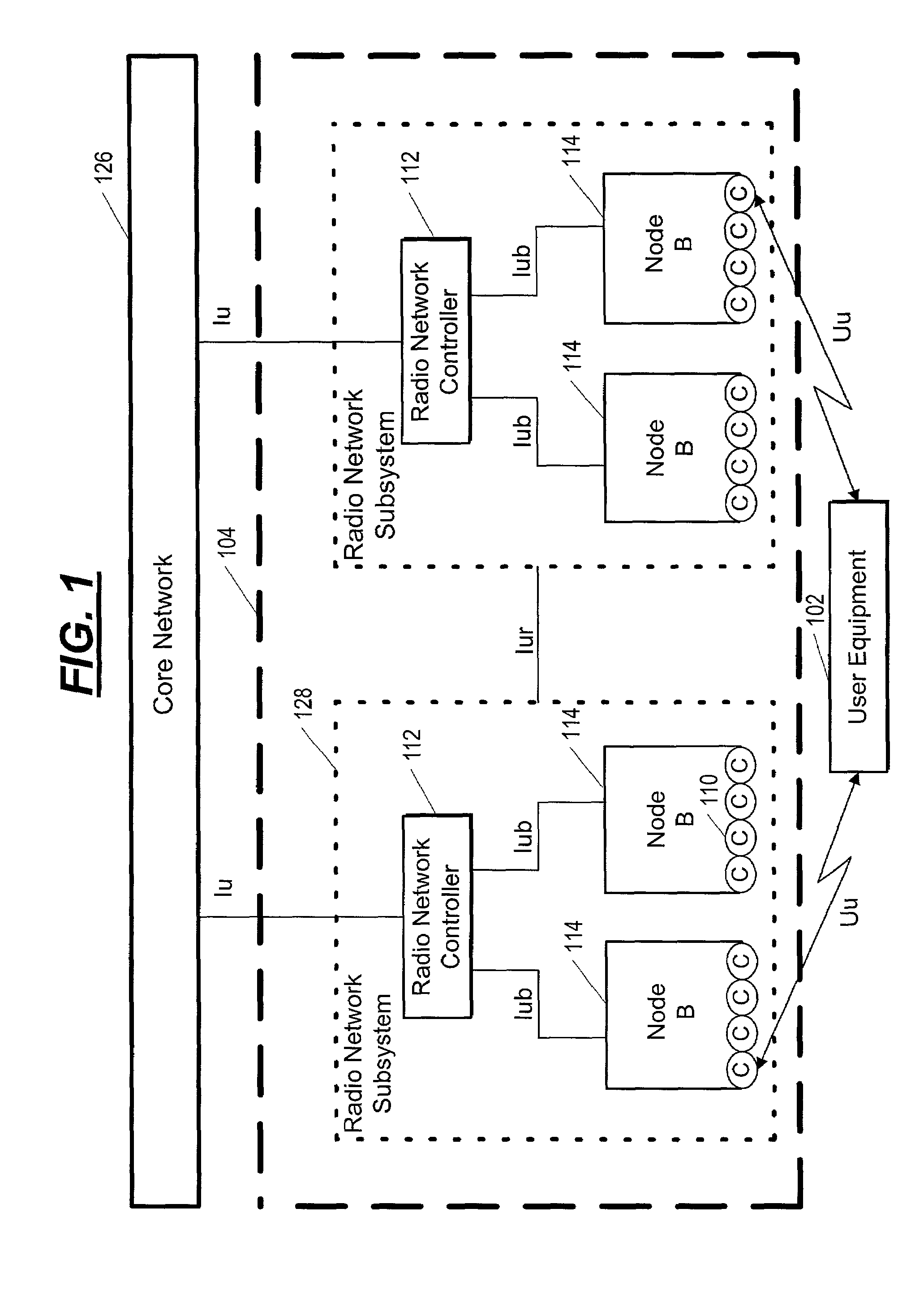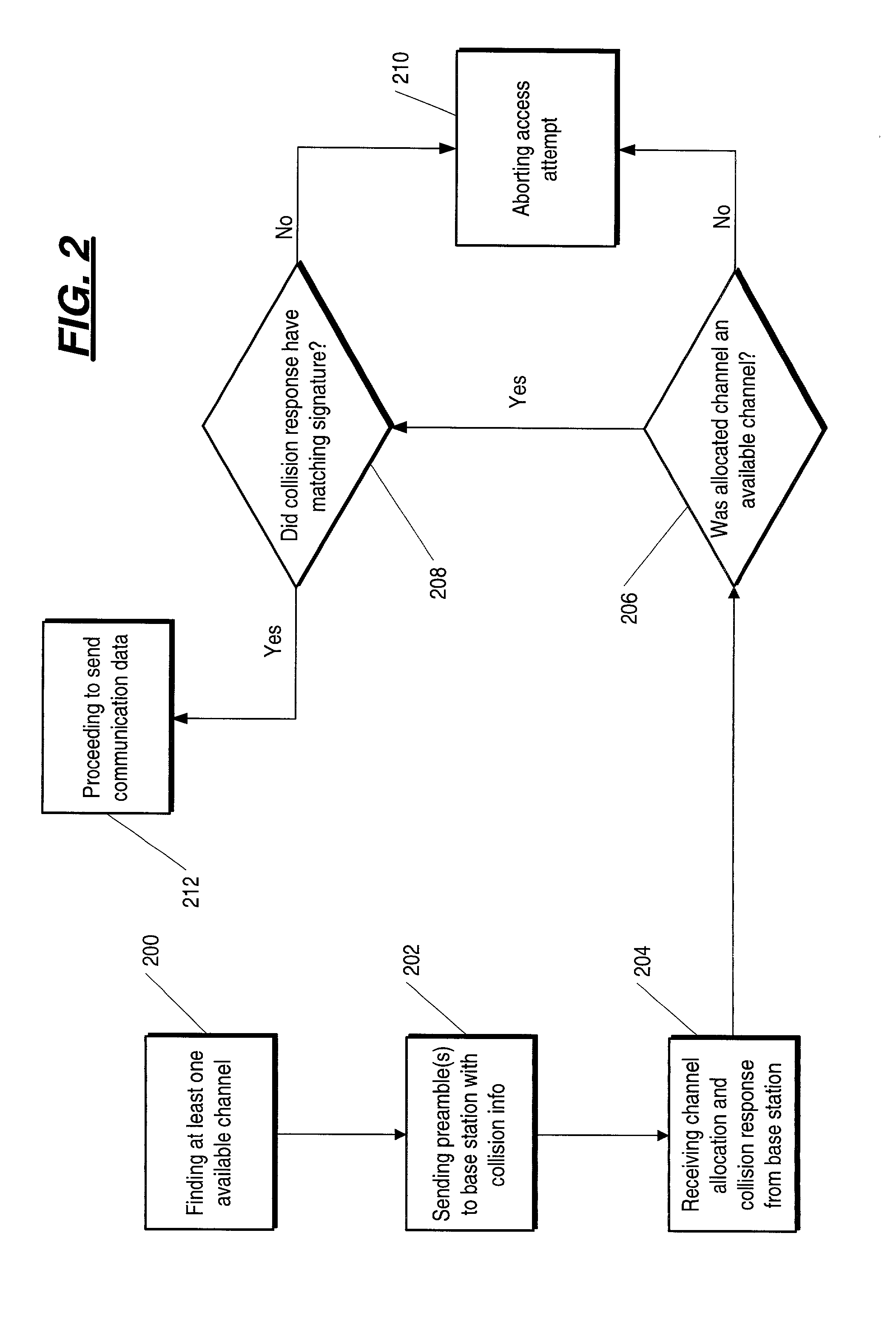Method and apparatus for common packet channel assignment
- Summary
- Abstract
- Description
- Claims
- Application Information
AI Technical Summary
Benefits of technology
Problems solved by technology
Method used
Image
Examples
Embodiment Construction
[0024]This invention can be used in the UMTS terrestrial radio access (UTRA) systems based on the 3GPP specifications where it is desired to use the uplink common packet channel (CPCH) for uplink packet data transmission. Further information on UTRA is available in the previously mentioned 3GPP technical specification documents. The invention is not, however, restricted to UTRA, but rather can be used in any radio communication system within the spirit and scope of this invention.
[0025]This invention occurs in the context of a larger wireless telecommunications system, as exemplified by FIG. 1 which shows the structure of a wireless system according to UMTS (which is synonymous with WCDMA or wideband code division multiple access). As can be seen in FIG. 1, the UMTS architecture consists of user equipment 102 (UE which is herein synonymous with “mobile device” or “mobile terminal”), a UMTS Terrestrial Radio Access Network 104 (UTRAN), and a Core Network 126 (CN). The air interface b...
PUM
 Login to View More
Login to View More Abstract
Description
Claims
Application Information
 Login to View More
Login to View More - R&D
- Intellectual Property
- Life Sciences
- Materials
- Tech Scout
- Unparalleled Data Quality
- Higher Quality Content
- 60% Fewer Hallucinations
Browse by: Latest US Patents, China's latest patents, Technical Efficacy Thesaurus, Application Domain, Technology Topic, Popular Technical Reports.
© 2025 PatSnap. All rights reserved.Legal|Privacy policy|Modern Slavery Act Transparency Statement|Sitemap|About US| Contact US: help@patsnap.com



